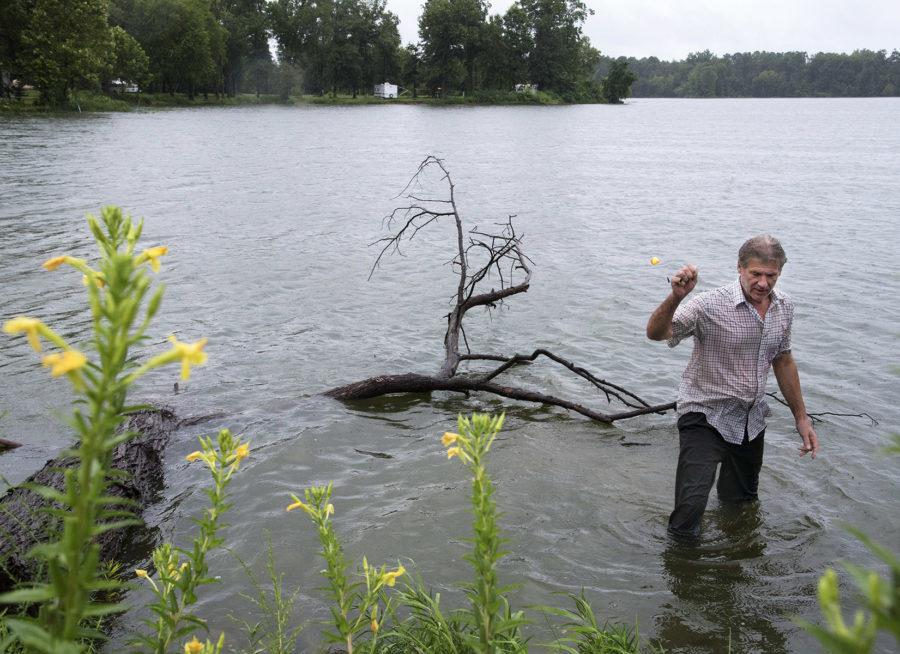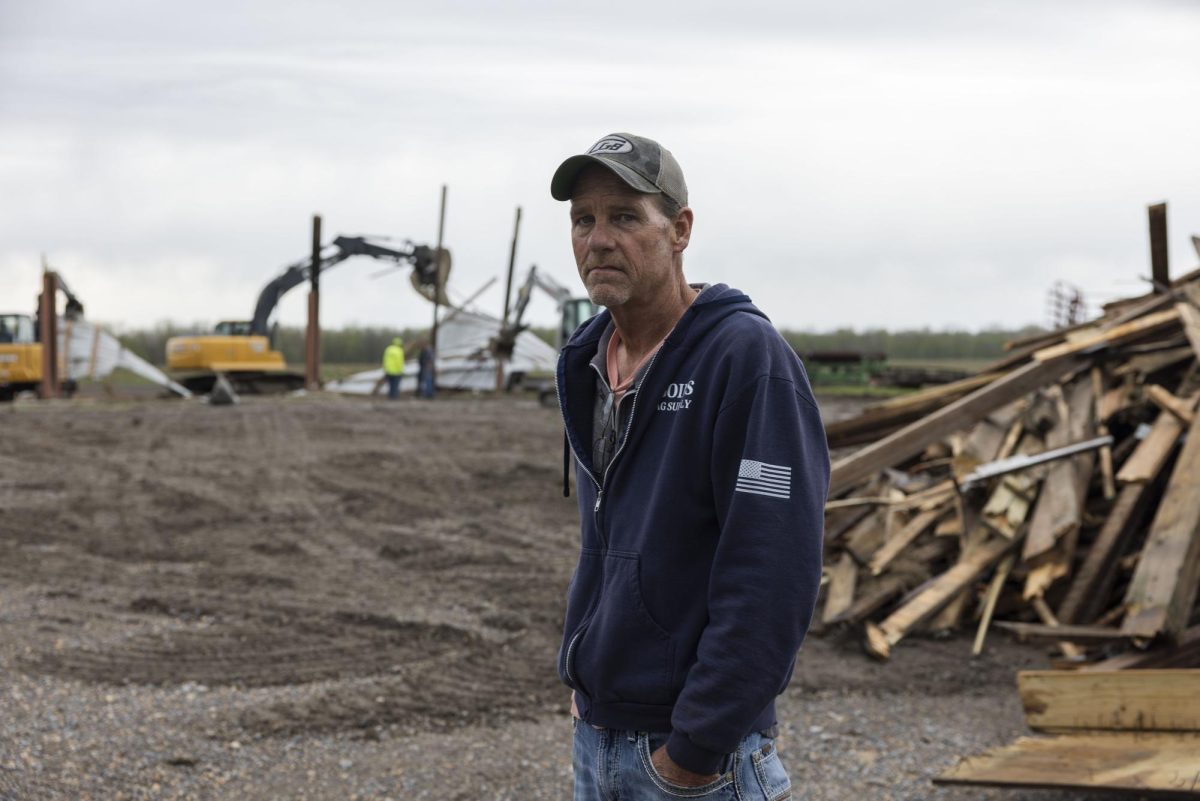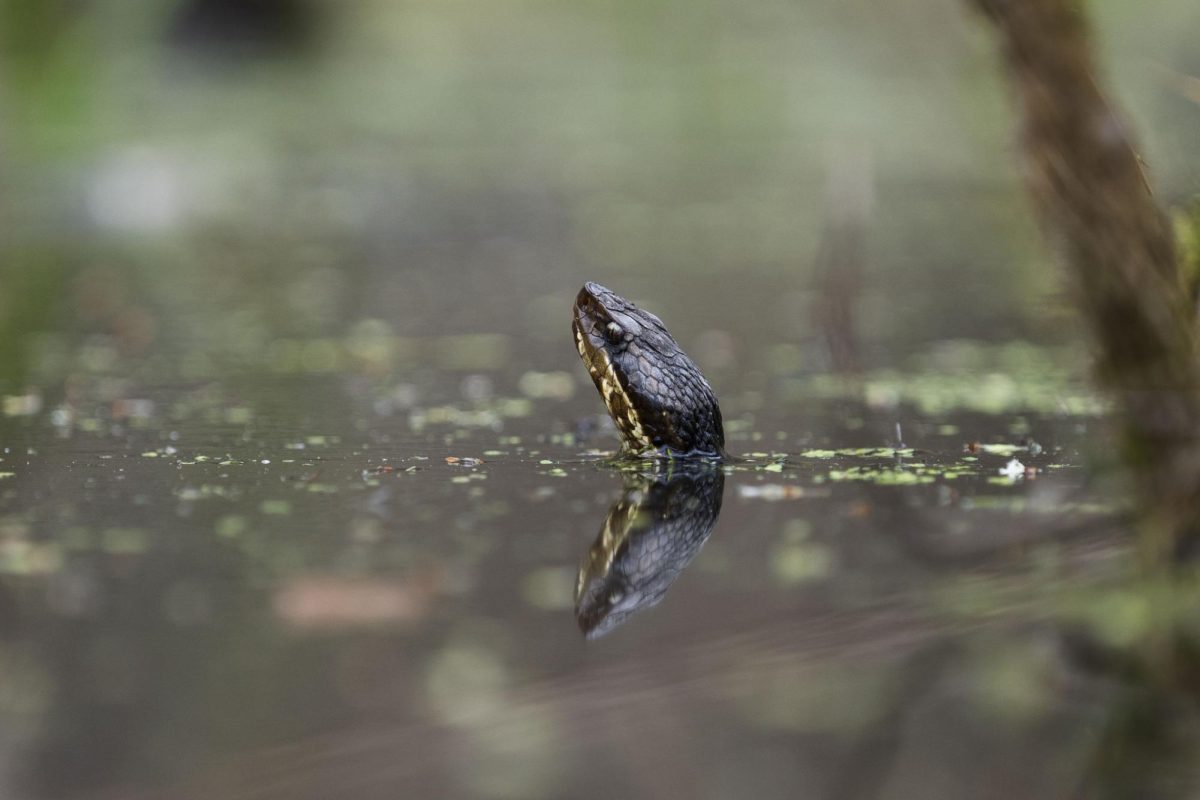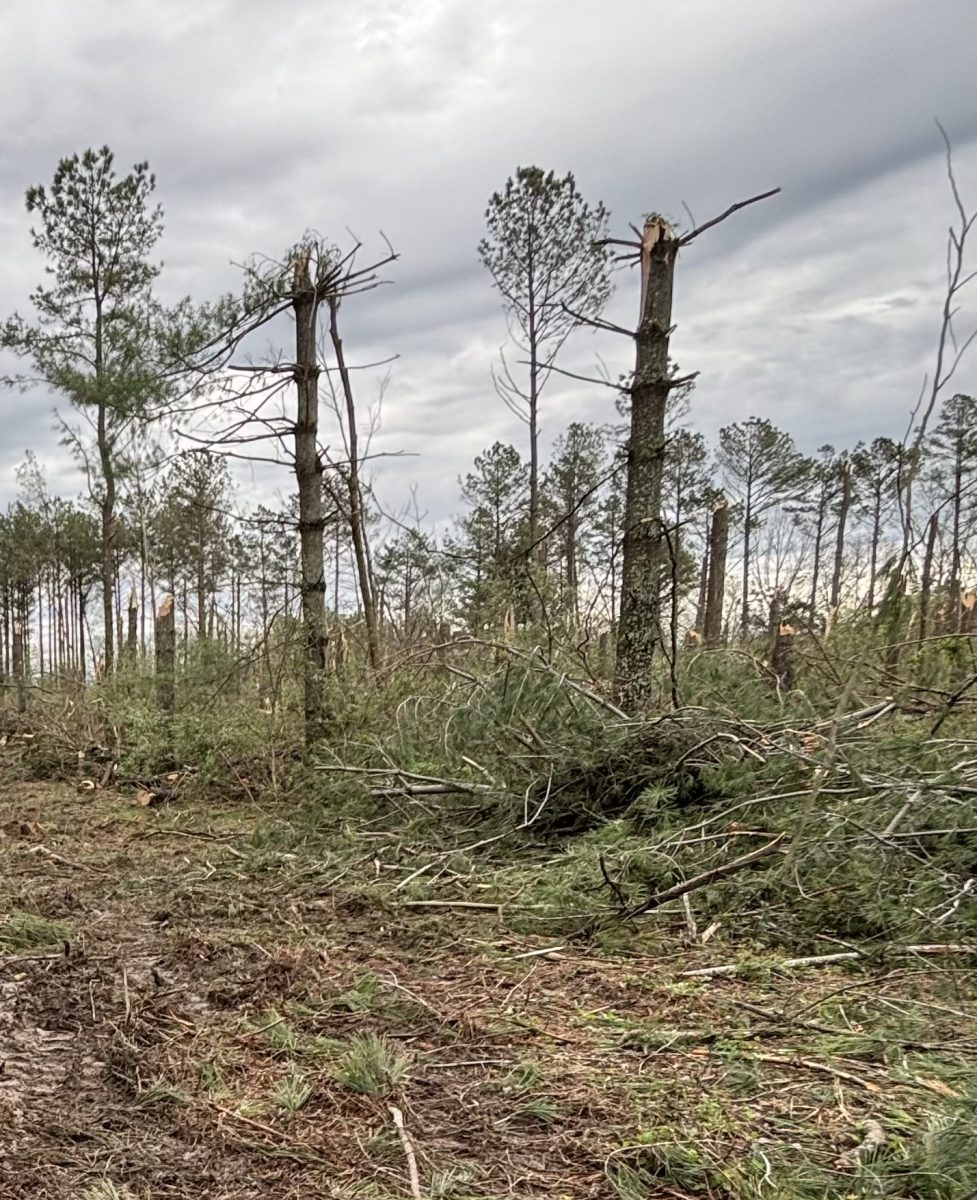August could be rainiest on record in Illinois
Retired semi-truck driver Frank Helton, of Vienna, retrieves fishing line and a float from Crab Orchard Lake on Aug. 13 during the National Weather Service’s flash flood warning for southeastern Jackson, Franklin, western Williamson, northern Cape Girardeau and Union counties. (Morgan Timms | @morgan_timms)
August 30, 2016
August could go down as the wettest on record in Illinois, though the hardest-hit spots have been outside the Chicago area.
Rainfall in the southern and western portions of the metro area has been higher than average this month, according to the National Weather Service, and the region has had at least some rain half of all days in August.
As of the start of Tuesday, average state rainfall totals for the month reached 6.34 inches, which is 2.75 inches above normal, weather service meteorologist Matt Friedlein said.
Advertisement
The state’s record average of 6.86 inches was set in 1977. Wednesday is expected to be mostly dry in the Chicago area, but rain is forecast elsewhere in the state, so breaking the record is possible, he said.
This month follows the third wettest July in Illinois. Because rainfall totals can vary widely, even within the Chicago region, and because the area has generally avoided flooding problems this month, it may come as a surprise that August could go down as the soggiest in the state’s recorded history.
At O’Hare International Airport, rainfall for August through Monday was 4.07 inches, below the 4.62-inch average, Friedlein said. But in southwest suburban Romeoville, that number is 7.68 inches. Some sites downstate recorded more than 13 inches of rain this month.
“Everyone (in the Romeoville area) has that feeling that it sure feels like we’re seeing thunder or rain almost every day, and that’s pretty close,” Friedlein said.
Downstate downpours have hurt summer staples such as the Illinois State Fair, which had to shut down for a one day earlier this month in Springfield, and the high Illinois River level has encroached some trails and parking lots at Starved Rock State Park near Utica.
Closer to Chicago, those who operate outdoors facilities such as pools and golf courses caught something of a break in that the second half of the month has generally been wetter than the first.
Karol Komar, park district facilities manager in Tinley Park, said there’s often a decrease in attendance later in summer anyway because students return to school. The earliest part of August had plenty of rain too, but it only affected attendance when it was “a total wash-out day” and “we only had one of those,” Komar said.
Advertisement*
Carter Patton, athletic supervisor for the Frankfort Square Park District in Frankfort, said the rain did seem to take a toll on attendance at Square Links Golf Course and Driving Range, and the district closed the course Aug. 20 because of a storm.
The rain often came with heat and humidity.
“People that play on our course are a little bit older, and they don’t want to play in the heat,” he said.
On the brighter side of a somewhat gloomy August, Illinois farmers are anticipating what may be a record-breaking crop this year. Though some agricultural land got too much rain, in general it came at the right time in the right amounts, right after planting and throughout the summer, said Bona Heinsohn, Cook County Farm Bureau spokeswoman.
Farmers were able to plant early this year, in mid-April.
The onset of warmer weather spurred growth, and the ensuing rain plumped up the corn kernels and soybeans. Some corn yield projections have surpassed 200 bushels an acre, which was the statewide record set in 2013, said Russ Higgins, a University of Illinois Extension educator.
“That’s really remarkable,” he said. “These are amazing yields.”
Unfortunately for farmers, the glut has caused commodity prices to drop. While corn was selling about $6 a bushel after a drought in 2012, now it’s selling for about half as much. That could translate into lower prices for groceries.
Higgins just hopes the fields dry out in time for the harvest to begin in late September.
“There’s no advantage to any further rain,” he said. “We’ve gotten all we need.”
A wetter month is also sure to mean more mosquitoes as the summer winds down, including the Culex mosquito that carries West Nile virus, said Gregg Dulleck, general foreman for the South Cook Mosquito Abatement District.
The district, like others in the region, is spraying to kill larvae before the mosquitoes reach adult stage, he said.
Because Culex mosquitoes can breed anywhere water is, Dulleck said it’s important not to let rainwater that accumulates in gutters, rain barrels or other containers stagnate. The mosquitoes that typically carry the Zika virus have yet to be found in the Chicago area, according to the Illinois Department of Public Health.
Spokeswoman Melaney Arnold said another, more rare kind of mosquito that can carry Zika has been found in the state, but only in southern counties.
Though flooding has not been a major problem in the Chicago area overall this summer, Lake Michigan levels are 11 inches above normal for an average August, according to the last reading on Friday, said meteorologist Ricky Castro with the weather service.
That’s mainly a concern because it’s possible high winds in the fall could cause shoreline flooding, he said.
But current lake levels are far from record-breaking. In 1986, Lake Michigan rose 22 inches above its average, Castro said. And, rainfall isn’t the only factor.
Castro also attributes the higher lake to recent winters that were especially cold, creating more ice cover, leading to less evaporation.
Chicago Tribune’s Robert McCoppin contributed.
___
(c) 2016 the Chicago Tribune
Visit the Chicago Tribune at www.chicagotribune.com
Distributed by Tribune Content Agency, LLC.
Advertisement









